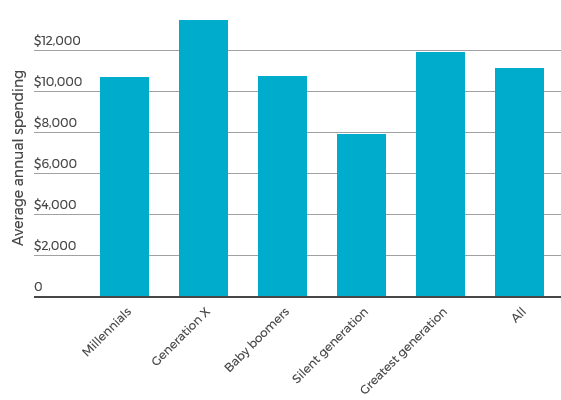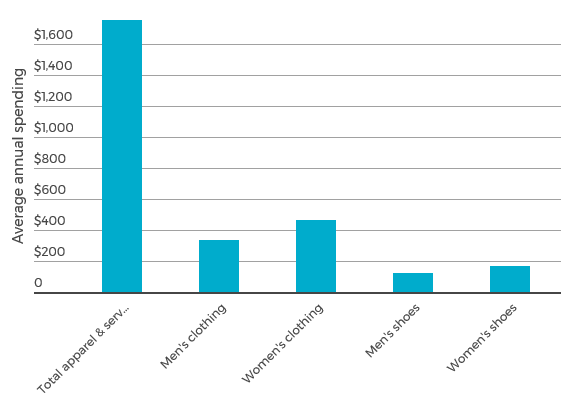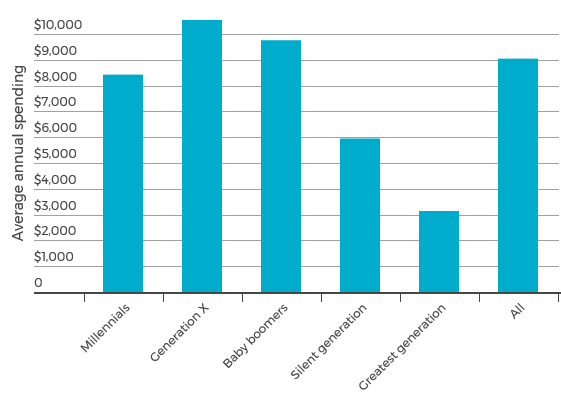Take the Stress Out of Your Holidays
The holidays are supposed to be a relaxing time spent with family and friends reflecting on the current year and looking ahead to the next. However, for most Americans, the holidays invoke feelings of stress and fatigue. According to a poll conducted by the American Psychological Association, nearly a quarter of Americans report feeling extreme stress during the holiday season, and 45% of Americans would prefer to skip Christmas. But, that doesn’t have to be the case. We can’t guarantee a white Christmas, but with proper planning and budgeting, you can make your holiday season the most wonderful time of the year.
The holidays are supposed to be a relaxing time spent with family and friends reflecting on the current year and looking ahead to the next. However, for most Americans, the holidays invoke feelings of stress and fatigue. According to a poll conducted by the American Psychological Association, nearly a quarter of Americans report feeling extreme stress during the holiday season, and 45% of Americans would prefer to skip Christmas. But, that doesn’t have to be the case. We can’t guarantee a white Christmas, but with proper planning and budgeting, you can make your holiday season the most wonderful time of the year. Here are some tips!
Keep it Basic
Your holiday dinner doesn’t have to consist of a cranberry stuffed Cornish game hen and 12 side dishes to turn heads. In our social media driven world, you may look to Pinterest and Facebook for inspiration, but don’t let those platforms set the standard for what is normal. If you want to try a fancy dish, that’s great!
But, if you don’t want to cook a spread suitable for Country Living Magazine, just stick to the basics. You’re guaranteed to save money on groceries, plus, it’s less stressful! And, once you put the essentials on your plate – turkey, potatoes, stuffing, rolls, and green beans – who has room for more?
Before roasting an entire turkey, take a look at your guest list. Is a whole bird really necessary? That’s a lot of food (and a lot of work). Consider serving just turkey breast instead! It cuts down on leftovers, and it’s more affordable.
Coupons and Savings Apps
Coupons are your friend! Often, you can find lots of great deals in the Saturday paper. Try browsing the weekly circulars online to look for sales on items you need. Also, try loading digital coupons to your store discount cards!
There are great savings apps out there as well! Jessica Hartman, Customer Service Representative at our Coffman’s Corner branch, offers the following tip: “I try to pair sales up with my Ibotta and Checkout 51 apps. If you watch the sales, you can purchase a turkey fairly cheap – I ended up getting one for $0.59/lb last year.”
Also, don’t be afraid to ask for help. If you are hosting the holiday dinner at your home, ask family and friends to bring a side dish or dessert. Divide out the responsibility so you’re not drained, both physically and financially.
Plan Ahead and Budget
Spending money on gifts is the most stressful part of the holiday season, according to the APA study. Don’t let it be! Begin planning for the holiday season early in the year. Katie Fulk, Head Teller at our Bridgewater Branch, says, “Some of the girls here like to buy Christmas gifts throughout the year. This helps financially because the cost of gifts can be spread from month to month, and then things are not as overwhelming at Christmas time. Also, if you save $20 a week, you end up with over $1,000.00 in a years’ time of saving.”
Looking for a great way to save throughout the year? Open a Christmas Club! The concept is that customers deposit a certain amount of money each week into a special savings account. Then, receive the money back near year-end for Christmas shopping. It’s a great way to put aside a small amount of money each week lessening the financial burden in December.
Save Money While Shopping
It might be too late to start saving for Christmas this year, but you still have options to save! Black Friday offers a variety of deals. If you hate fighting the crowds, most deals are also offered online, so stay home in the comfort of your pajamas and shop! Cyber Monday also offers great savings!
Charles Halterman, Branch Specialist at our Myers Corner location suggests a Chinese gift exchange to cut down on costs. He says, “My family and I did a Chinese gift exchange one year for the adults. Everyone buys one gift and wraps it. Then, you put numbers in a bowl for however many people are participating. Everyone draws a number, and Number One chooses a gift. Then, Number 2 can steal Number 1’s gift or choose a new gift…and so on, and so on. In the end, everyone gets one gift, you have fun playing a game with friends and family, and everyone saves money!”
Gifts to Please Anyone
Finally, we all have that family member who won’t make a Christmas gift suggestion. If you find yourself not needing anything, consider asking friends and family to make a donation to a charity you support instead of receiving another pack of socks you don’t need (or want). Kristen Huffman, Customer Service Representative at our Craigsville Branch does this every year. She says, “I ask family to send money to a charitable organization instead of buying me gifts. I don’t really need anything especially something that will just clutter up my house even more. Each year my husband gives money to World Vision as my Christmas present.”
Gift cards are also a great option for those family members without a Christmas list. Did you know you can purchase Visa gift cards at any F&M Bank Branch location? Avoid the long lines at Walmart, and pick up a Visa gift card next time you’re making a banking transaction.
YToxOntzOjE3OiJ0cmlnZ2VyX3JldmlzaW9ucyI7czoxOiIxIjt9















